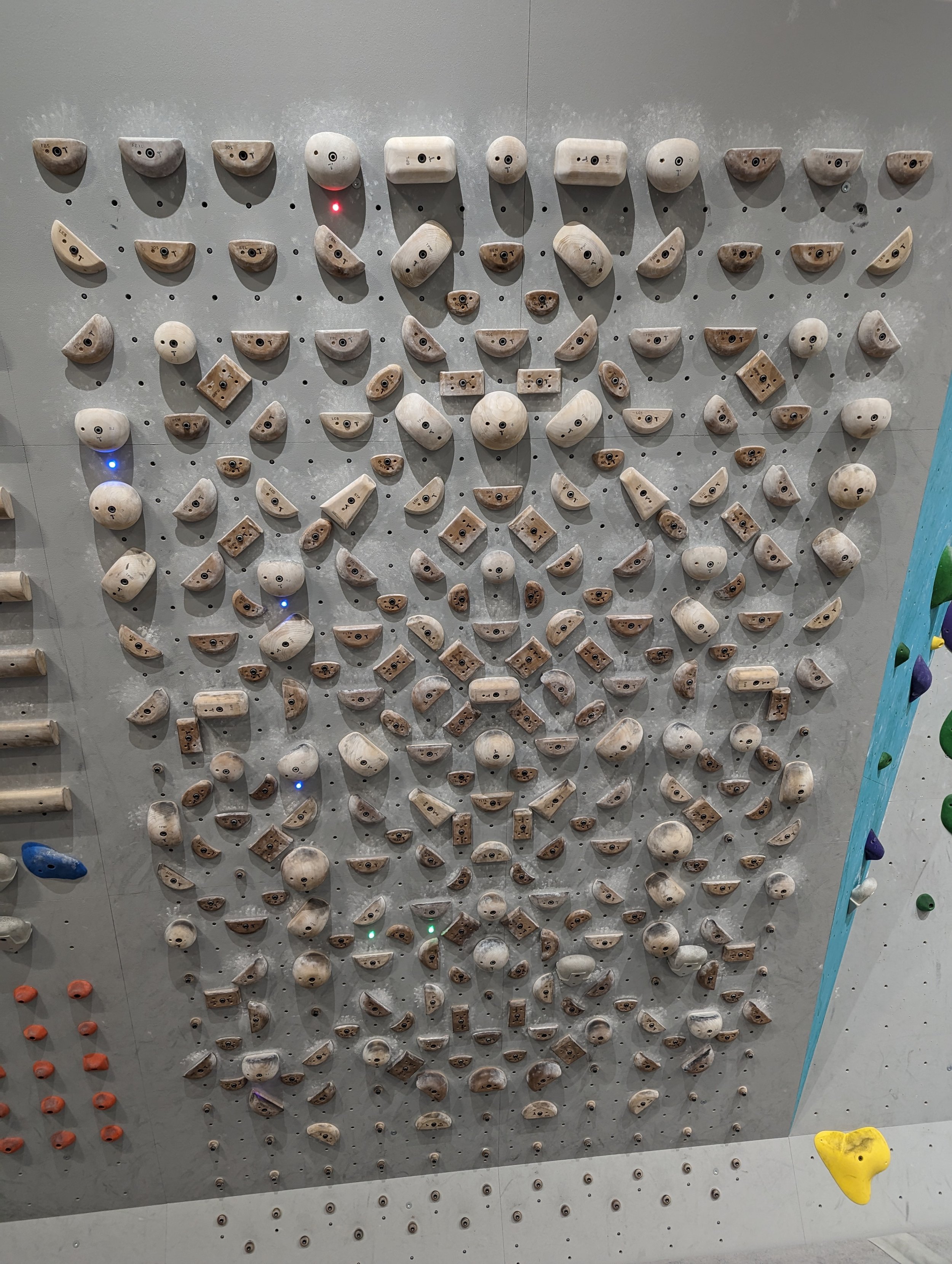Intro to Board Climbing!
Board Climbing…You may see these boards in your gym or while scrolling on instagram. You may wonder, “What’s all the rage?” Or you may think, “Those board are only for the pros!” Well, I’m here to tell you board climbing can be for everyone! It’s great for training and measuring progress. I’m completely obsessed and found that it translates great to improving my outdoor climbing. Board climbing teaches a variety of climbing techniques including dynamic movement, body tension, toeing down, toe hooks, pinches, crimps, slopers, and more. There’s a ton of climbing and learning packed in to a compact wall!!
There are several different boards out there- Moonboard, Kilter board, Tension board (1&2), Grasshopper board, the Woods board, Beastmaker board and more. In the US, the moon, kilter and tenision boards are the most common, so I’m going over the basics of these three boards.
THE BASICS
The first step to board climbing is downloading the app. These apps allow you to scroll throw thousands of problems that have been set by people all over the world. You can filter through by grade, number of repeats, setter, and more. You can keep track of your sends and make lists of your favorite climbs. The apps make it easy to track your progress. Problems are set by using the app as well. The app is connected to the board by bluetooth, so when you pick a problem , the board lights up!
The standard rules of bouldering transfer to the boards. Start holds and finished holds matched, unless otherwise stated. Follow the lit up holds. The color of the lights vary based on the board. Board climbing can be confusing at first because you may not know which hold to go to, despite the lights. The lights are below the hold you will be using. This can make it difficult to see which holds to use as feet when you are above the holds.
There is a great debate about matching holds on boards. In general, its best to avoid matching so that you can increase your power and ability to do big moves. Some problems will specifically say, no matching in the description or will have a symbol of two hands in a circle with a line going through them.
Now for some specifics about each board!
The MOonboard
The moonboard is an asymmetric board that is set at 40 degrees. This board has smaller holds on it than the other boards so the grades start at approximately V3. The Moonboard is different than the Kilter and Tension because the kicker is on. The kicker is comprised of the ten yellow footholds and you can use any of these to start the problem. The start holds on the Moonbard are green, the hand and foot holds, and red is the finish. A cool thing about the moonboard is that there are benchmarks for every grade. Benchmark climbs are ones that the community has widely agreed on the grade. You’ll often find these can feel a bit hard for the grade compared to normal gym routesetting or non-benchmark climbs.
THe tension board I
The tension board is unique because it is a symmetrical board, which means you can flip every problem. This is great if you have an injury. Also, it can highlight weaknesses. If a problem is really easy on your right side, but difficult on the left, then you have just identified a weakness that can be trained. The tension board I can be climbed at different angles, 20-50 degrees. The start holds are green, the hand and foot holds are blue, foot only holds are magenta, and the finish holds are red. The holds are made from wood, which can make them a little slick. Therefore, you will learn good footwork and body tension while climbing on the tension board.
The kilter board
The kilter board is an adjustable asymmetric board that’s the most beginner friendly. It has legit jugs and big feet to hard pinches and tiny crimps that make this a great board for V0 to V14+ climbers. The angle of the board goes from 0 to 70 degrees, which is the biggest range of these three boards. I’ve found that the kilter board is great for learning dynamic moves because of the finger friendly holds. I don’t have to think about body tension or finger strength, which allows me to concentrate purely on learning how to move dynamically. The kilterboard holds light up all around the base, so you can easily see where to go even if you’re above the hold. The start holds are green, the hand and foot holds are blue, foot only holds are yellow and finish holds are magenta.
I hope you find this guide helpful and the boards less intimidating. Board climbing is a great climbing tool that will help you achieve your next-level climbing goals!!




